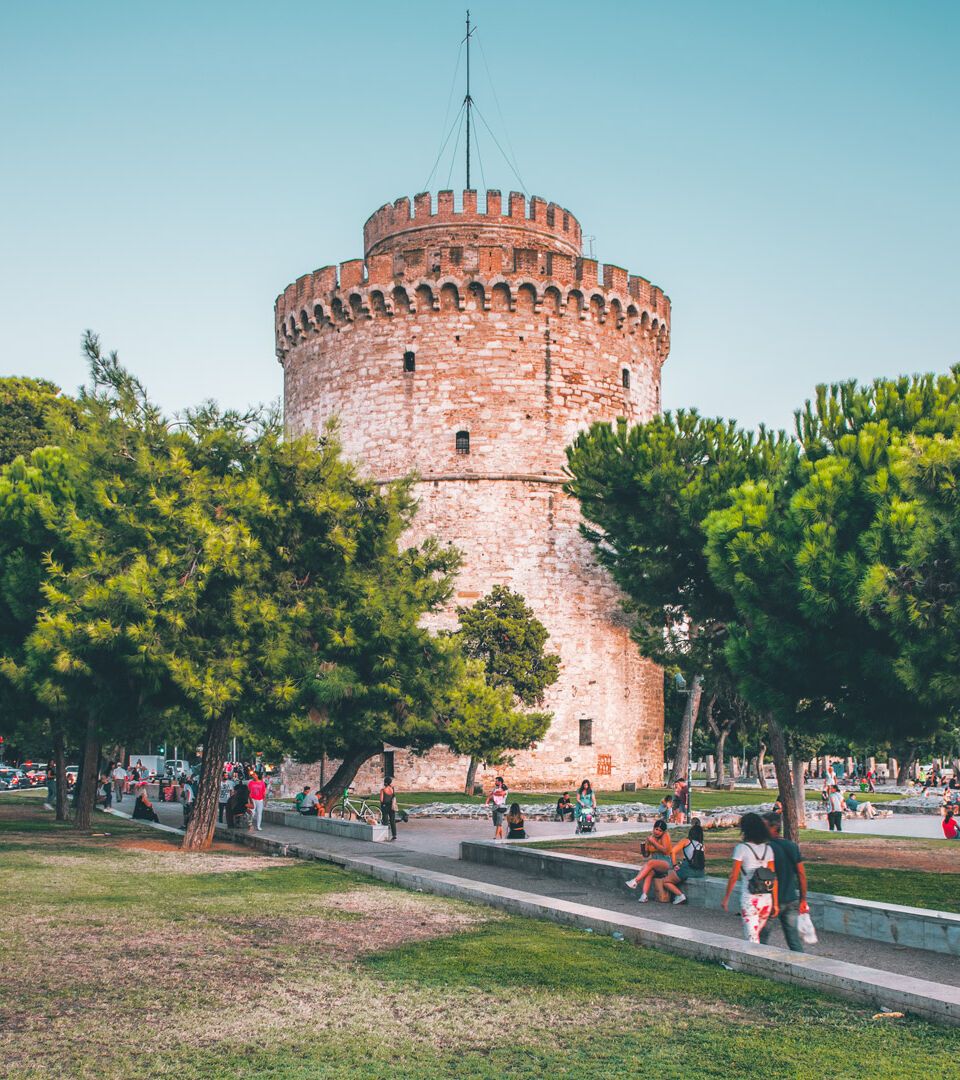White Tower of Thessaloniki
In general
Thessaloniki's
most famous landmark, the 34m-high White Tower has a harrowing history as a
prison and torture chamber. In 1826 Ottoman sultan Mahmud II massacred
rebellious janissaries (elite troops of forcibly Islamicised Christian boys)
here. After the 1913 Greek reconquest, the ‘bloody tower’ was whitewashed to
expunge this grisly past. Grab a free audio guide to help navigate the
multimedia displays in the tower, then drink in views of the bay from the top.
Physical
Attributes
The White Tower takes the form of a cylindrical drum 23 m
(75 ft) in diameter with a height of 34 m (112 ft) above ground
level, on top of which is a turret 12 m (39 ft) in diameter and
6 m (20 ft) high. Some of the embrasures in the outer wall of the tower
are reached by a spiral ramp; others are accessed from a central room on each
of the six floors.
The turret houses a platform with a diameter of 10 m
(33 ft), and the platform at the top of the main tower in front of the
turret is about 5 m (16 ft) wide.
History
The tower, which once guarded the eastern end of the city's sea
walls, was for many years attributed to Venice, to which the Byzantines
ceded Thessaloniki in 1423. It is now known that the tower was constructed by
the Ottomans sometime after the army of Sultan Murad II captured Thessaloniki in 1430. Until 1912, an inscription in Ottoman Turkish verse above the door dated the
structure to AH 942 (1535–1536).
The historian Franz
Babinger speculated
that the work was designed by the great Ottoman architect Mimar Sinan, who is known to have
built fortifications, including a similar tower at the Albanian port Valona in 1537.
The White Tower
Museum
The White Tower houses an exhibition dedicated to the city of
Thessaloniki and its history throughout various periods, organized by the
city's Museum
of Byzantine Culture. It is under the administration of the Ephorate of
Byzantine Antiquities of theGreek Ministry of Culture.
The Tower is open to the public, and visitors have the
opportunity to view a map of the city with monuments and museums, a timeline
with events relevant to Thessaloniki, scientific articles of distinguished
historians and archaeologists, bibliography etc. School excursions may be
arranged by contacting the Byzantine Museum

Comments
Post a Comment